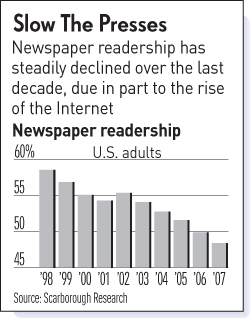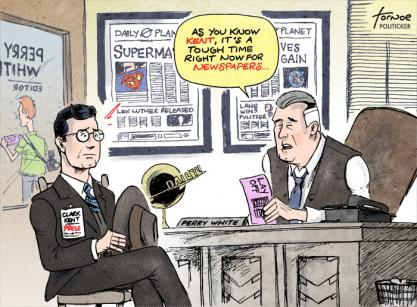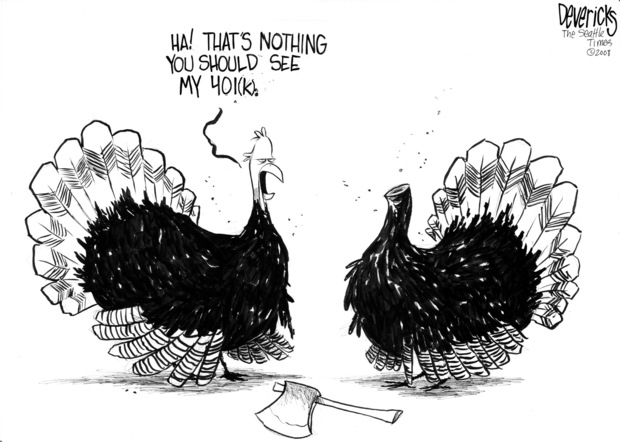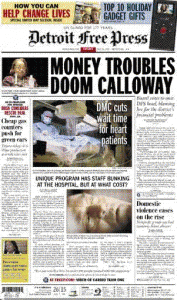 We could almost see the collective eyes rolling in the newsrooms of the Detroit News and Detroit Free Press today as the newspapers’ holding company announced a “bold transformation” that will cut home delivery to three days per week and move the bulk of editorial content online.
We could almost see the collective eyes rolling in the newsrooms of the Detroit News and Detroit Free Press today as the newspapers’ holding company announced a “bold transformation” that will cut home delivery to three days per week and move the bulk of editorial content online.
The press release from Detroit Media Partnership described the move as “a sweeping set of strategic and innovative changes designed to better meet advertiser and reader needs,” although the reader benefit of delivering fewer issues wasn’t clearly articulated.
It has always struck us as odd that newspapers, whom we count on to cut through the hyperbole of press releases, can sling it with the best of them when their own business is involved. For a more balanced perspective, read the account in the Detroit News. The comments from Free Press editor Paul Anger also convey a sense of resignation about the shift.
Newsosaur Alan Mutter wastes no time poking holes in the announcement, quoting a former executive saying that the pullback was the only alternative to shutting down the two dailies. The move is historically notable in light of the fact that the News was once the largest afternoon newspaper in the nation.
Martin Langeveld is generous in calling the pullback “not the best solution…it keeps in place two separate press runs on most days while failing to differentiate the two papers more clearly. And implementation will be a nightmare, I’m afraid,” he says, shrewdly.
Editorial Departments Intact
About 200 people will lose their jobs, or less than 8% of the combined workforce. Cutbacks in the editorial department will be minimal because of the need to maintain “vigorous newsgathering operations and editorial voices,” according to the News account. Most of the cuts will presumably come in production and operational departments.
Next to scaling back frequency, the most controversial aspect of the restructuring plan will likely be the introduction of a light version of both newspapers to be sold exclusively at newsstands on days when the full edition isn’t published. Industry sources estimate that less than 40% of the circulation of both newspapers comes from newsstand sales, a fact that raises questions about how advertisers will be charged for running there. On Monday holidays, print circulation may fall close to zero.
A daily electronic edition will also be introduced for people who want to do their printing at home. “These are exact copies of each day’s printed newspaper and can be easily navigated and printed from readers’ computers,” the press release says. This means that the $170 million printing plant that the newspapers built in 2005 will now be nearly idle four days a week while printing is outsourced to the readers. There is no research we’re aware of that supports the assumption that readers are interested in printing their own newspapers.
Cultural Challenge
The gutsiest dimension of the plan is the commitment to move much of both papers’ newsgathering operations online. This recognizes the unstoppable forces that are transforming newsgathering organizations around the world. As we reported here this morning, new Gallup research shows that 31% of US adults now consult the Internet daily for news while 40% read a local newspaper. The trend lines, however will clearly cross sometime in the next five years, making the Internet the most important news source among US adults. Only 22% of adults under 30 read a local newspaper daily, Gallup reported
The biggest challenges of all will be cultural. Newspapers often give lip service to the importance of their websites, but stories still abound about resistance from ink-stained veterans who can’t accept the possibility that a screen can be as important a medium of news delivery as a printed page. Detroit’s newspapers will now have to compete on foreign turf, adapting their products to the standards and cultural practices of the bloggers that so many of them hate. It will be interesting to see if the reporters and editors can learn to thrive in a medium that has done them so much damage.
 No doubt there will be lots of analysis and reaction to follow. We see that Gannett Blog has logged 70 comments in the first four hours. We’ll keep an eye out. In the meantime, we couldn’t help taking a snapshot of the ad that appeared on the Detroit News‘s account of today’s announcement. Perhaps a cleansing is exactly what’s needed.
No doubt there will be lots of analysis and reaction to follow. We see that Gannett Blog has logged 70 comments in the first four hours. We’ll keep an eye out. In the meantime, we couldn’t help taking a snapshot of the ad that appeared on the Detroit News‘s account of today’s announcement. Perhaps a cleansing is exactly what’s needed.
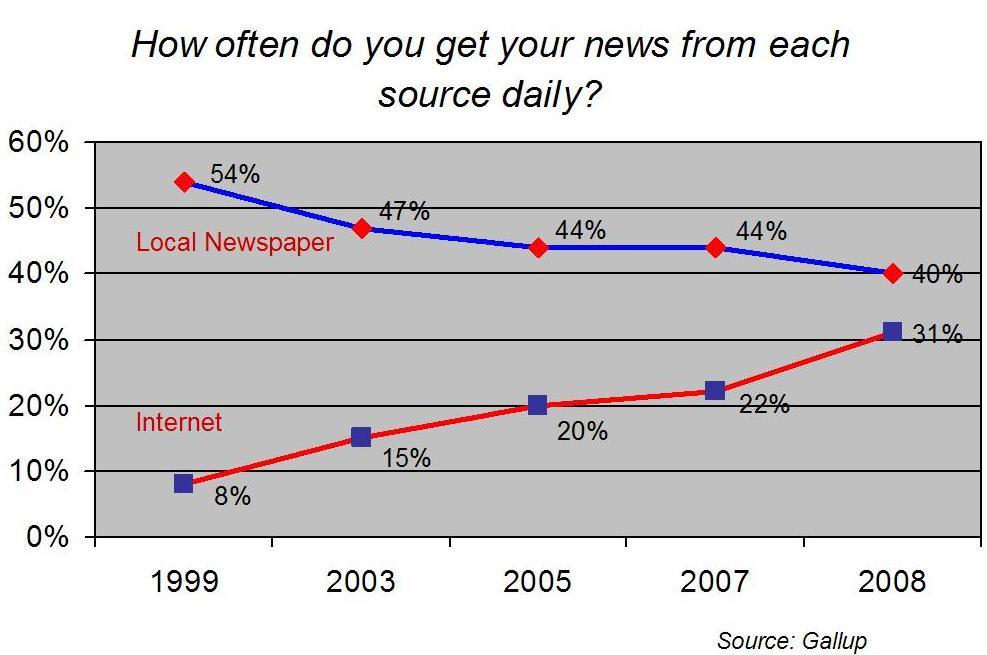
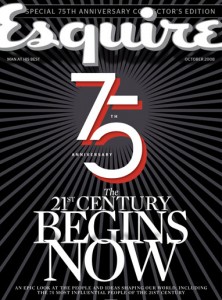 Esquire‘s 75th anniversary issue in October was a media sensation for its battery-powered cover and fat ad folio. But
Esquire‘s 75th anniversary issue in October was a media sensation for its battery-powered cover and fat ad folio. But 
